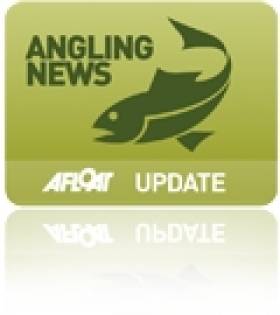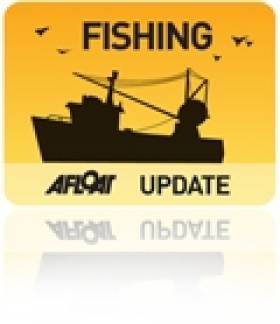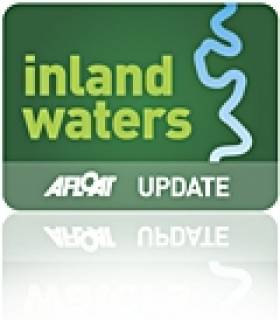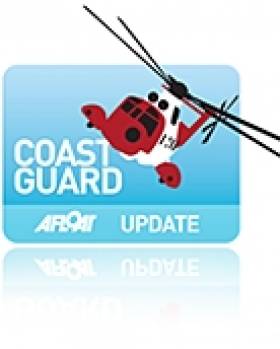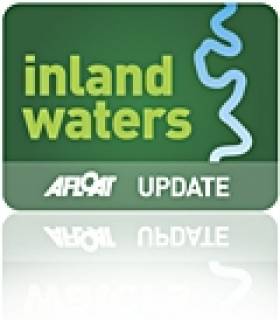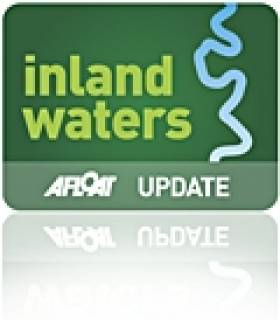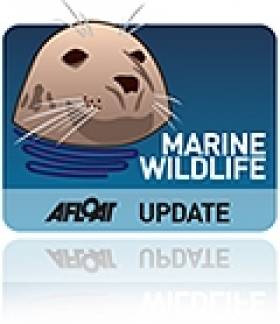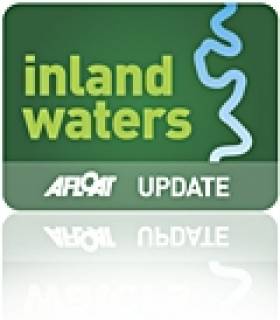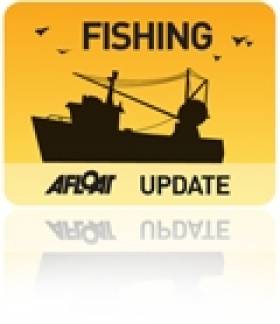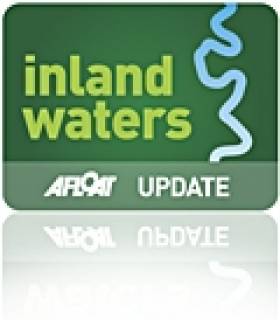Displaying items by tag: Lough Neagh
Lough Neagh Eels Star Of The Show At NI Angling Fair
#Angling - Derry chef Emmett McCourt looks forward to giving visitors to the Northern Ireland Angling Show a taste of Lough Neagh's world-renowned eels this coming June.
As the top cook tells the Londonderry Sentinel: “Lough Neagh eels are revered around the world as the best there are - but people here [in Ireland] don’t generally eat them.”
McCourt wants to make them the star of the show at the angling expo, which was first held last summer alongside the popular Irish Game Fair on the shores of Ireland's biggest lake.
The joint events are expected to highlight the wealth of local produce and artisan food, not to mention recipes reflecting the traditions of the region.
The 2015 Irish Game Fair and Northern Ireland Angling Show take place over the weekend on 27 and 28 June at Shane’s Castle in Antrim.
#Seafood - Lough Neagh eels may no longer be protected by Brussels regional designation rules if a proposed free trade deal with North America goes through.
As the Belfast Telegraph reports, the lough's eels are among a number of foodstuffs in Northern Ireland that come under EU Protected Geographical Indication, which means that only products produced in a particular area – like Cornish pasties or parmesan cheese – can be named and marketed as such.
But German agriculture minister Christian Schmidt has said that such protections, which are not recognised in the United States, may have to be abandoned "if we want to take advantage of the opportunities of free trade with the huge American market".
The Belfast Telegraph has more on the story HERE.
#LoughNeagh - The Belfast Telegraph has posted an incredible photo of a funnel cloud that appeared over Lough Neagh last week.
Barry McGuigan, a fisherman working on the largest lake in the island of Ireland, captured the stunning image of the unusual cloud formation - often the precursor to a tornado - as it hovered over the water close to another fishing vessel.
"It was like a twister but it stayed in one place for five to 10 minutes and then it just fizzled out," he said.
It's now believed to be the most photographed and videoed weather phenomenon in Northern Ireland, with this video posted to YouTube by John McCorry just one example.
Meanwhile, the Belfast Telegraph also reports that the aristocratic owner of Lough Neagh has vowed to work with the NI Legislative Assembly on its strategic management.
The 12th and present Earl of Shaftesbury, philanthropist and endurance athlete Nick Ashley-Cooper, said he welcomed the conclusion of a long-delayed report into the future of the lough and "wholeheartedly" agrees with its findings.
It comes some months after fears that the report by a special working group would remain shelved at Stormont, and its findings never made public.
"The report indicates clearly that the estate's ownership of the bed and soil is not a barrier to any potential development and that there is no compelling argument in favour of public ownership," said Lord Shaftesbury.
The Belfast Telegraph has more on the story HERE.
Canoeists Rescued After Lough Neagh Capsize
#canoe – Three canoeists have been pulled from the water after getting into difficulty in Lough Neagh.
Belfast Coastguard received a call on VHF channel 16 just after 1pm yesterday afternoon reporting that three canoeists had fallen into the water between Rams Island and Sandy Bay. Conditions on the water at the time were described as choppy, with a southerly wind of force 4 (13–17 mph).
The Kinnego Coastguard Rescue Team along with the Kinnego and Ardboe Independent Rescue Boats were sent to the scene. The three, who were all wearing lifejackets, were rescued from the water by a sand barge that was close by at the time. They were then transferred to the Ardboe rescue boat, and taken ashore where they were met by Coastguard Rescue Officers and passed into the care of the Northern Ireland Ambulance Service.
Liam Colquhoun, Watch Manager at Belfast Coastguard, said:
"These three canoeists all had lifejackets on, but unfortunately they weren't wearing wet suits or any type of gear that would help keep them warm. They were passed into the care of paramedics showing signs of hypothermia.
"We always recommend that canoeists and kayakers are well prepared before setting out. Check weather and tides, wear a buoyancy aid, suitable clothing and carry a VHF marine band radio with you. Where there is good network coverage then it is worth carrying a mobile phone in a waterproof bag.
"Call the Coastguard if you get into difficulty, preferably via channel 16 on your radio or if not by calling 999 on your mobile and asking for the Coastguard."
NI Minister Hits Back At 'Burial' Claims Over Lough Neagh Report
#LoughNeagh - Northern Ireland's Agriculture Minister has rejected claims that she has ignored the findings of a working group on the future of Lough Neagh that were submitted a year ago.
As previously covered on Afloat.ie, the report considering the future of the largest of Ireland's inland waterways has sat on minister's shelves in Stormont for almost 12 months, with fears mounting that its recommendations will never be made public.
But the Belfast Telegraph reports that Minister Michelle O'Neill has hit back at criticism from DUP members of the NI Assembly who accused her of having "buried" the report because it did not gel with her department's plans to take the lough into public hands.
"I think that there is a certain wee bit of paranoia there," said the minister regarding the DUP's comments.
She also said that her "sole focus throughout all this work has been on unlocking the potential of Lough Neagh", adding that she had only recently been presented with new research commissioned by Culture and Leisure Minister Caral Ni Chuilin that would add context to last year's working group findings.
The Belfast Telegraph has much more on the story HERE.
Lough Neagh Report On Shelf As Public Ownership Plans Stall
#LoughNeagh - The Belfast Telegraph reveals that a report by a special working group into the future of Lough Neagh has sat on the shelf at Stormont for almost 12 months - and it's feared that its recommendations will never be made public.
The report was commissioned as part of plans in early 2012 by the NI Legislative Assembly to take the largest inland lake in the island of Ireland - which supplies nearly half of Northern Ireland's drinking water - into full public ownership.
It's not commonly known that Lough Neagh is owned by the Earl of Shaftesbury, though the water within it is public property.
The 12th and present Earl of Shaftesbury, philanthropist and endurance athlete Nick Ashley-Cooper, recently met with MLAs to discuss the stalled progress on taking the lough public.
Responsibility for various aspects of the lough fall on different departments within Stormont, which may explain why one MLA believes the report "may never see the light of day".
The Belfast Telegraph has much more on the story HERE.
Lough Neagh Loses Out As Migrating Birds Stay Put
#MarineWildlife - Lack of food has seen a severe decline in migrating birds visiting Lough Neagh for the winter, according to UTV News.
Researchers from Queen's University Belfast have noted a shocking 75% drop in numbers of visiting water fowl on Ireland's largest lough - from some 100,000 to fewer than 21,000 in the span of 10 years.
And the finger of blame is being pointed at a change in the lough's ecosystem that has seen a significant fall-off in the Special Protection Area's main food source of insects and snails.
Ironically, the reason for this may be a stemming of agricultural run-off into the lough, the extra nutrients from which "artificially boosted its productivity", according to Dr Irena Tománková from Quercus, Northern Ireland's Centre for Biodiversity and Conservation Science.
In addition, climate change has seen lakes in Northern Europe that were once frozen over in winter become available for feeding for more of the year, meaning that once migratory birds are staying put.
UTV News has more on the story HERE.
NI Man Strong-Arms His Way Across Lough Neagh In Swim First
#LoughNeagh - Former British Army corporal Dean Owen recently swam 20 miles across Lough Neagh despite not having full use of his legs.
And as the News Letter reports, the achievement is doubly special as the route from the north-east shore to the south-west has never been completed before by any swimmer - let alone one only using their arms.
Owen - who broke his back in a road accident more than 10 years ago - received a plaque from Craigavon mayor Mark Baxter on top of the £8,500 (€10,000) he has already raised toward treatment for four-year-old Caleb Kerr's cerebral palsy.
In other Northern Ireland waterways news, residents of East Belfast will soon be able to enjoy a new crossing of the Connswater River at Victoria Park, according to the News Letter.
The Sam Thompson Bridge saw its main 60-tonne structure lifted into place by one of Europe's largest cranes last weekend.
It's expected to form part of a new network of pedestrian paths linking the Castlereagh Hills to Belfast Lough.
NI Pays Tribute To Priest Who Pioneered Lough Neagh Eel Industry
#Fishing - Tributes have been paid to the driving force behind Europe's largest wild eel fishery in Lough Neagh.
As the Belfast Telegraph reports, Father Oliver Kennedy passed away yesterday at the age of 83.
Described by NI Agriculture Minister Michelle O'Neill as "an inspirational figure for Lough Neagh fishermen and their families", Fr Kennedy was chairman of the Lough Neagh Fishermen's Co-operative Society.
The priest co-founded the society in 1965 in an effort to assist local eel fishermen in asserting their rights on the lough - including fundraising efforts that enabled the fishermen to take control of Toome Eel Fishery.
The Belfast Telegraph has more on the story HERE.
NI Minister Greenlights Ulster Canal Restoration
#InlandWaterways - NI Environment Minister Alex Attwood has finally announced planning permission to restore part of the historic Ulster Canal that has not been used since 1929.
The original Ulster Canal was completed in 1841 and linked the Erne System to Lough Neagh with a 93km navigation route. It was last used for trading boats in 1929 and officially closed two years later.
The application is to restore 14km of the navigational route in total - 5.5km or river navigation from Quivvy Lough to Gortnacarrow and 8.5km of canal from Gortnacarrow to Clones.
This will involve construction of the existing canal route and tow paths for public access on both banks. New road bridges are to be constructed at Derrykerrib, Wattle Bridge, Gortnacarrow and Clonfad/Munilly with three farm accommodation bridges.
The plan is to restore two existing canal bridges and a double lock at Gortnacarrow that will facilitate a rise from the River Finn to the canal section. A mooring of 170m with 32 car parking spaces and public toilets will be provided at Gortnacarrow. A picnic area and a further 20 parking spaces will be provided at the new bridge at Clonfad/Munilly.
Minister Attwood said: “The Ulster Canal restoration project has been a key heritage and tourist attraction for a long time, which has gathered momentum since the late 90s. Today is a turning point for the project. I hope the Planners’ green light means the project can accelerate.
“This is an example of cross-border initiatives working and working well. It follows from my announcement to give planning permission to the bridge at Narrow Water, linking Warrenpoint and Omeath.
“This cross-border project will be a boost for the people of Fermanagh, Cavan and Monaghan. It will re-open a historic waterway that has not been used for over 80 years and offers huge opportunities for regeneration and leisure-related activities for the entire region.”
Four accompanying applications for Listed Building Consent to carry out works to repair and restore three listed bridges and works to the Clones Aqueduct have also been approved.
Northern Ireland's Department of the Environment consulted Fermanagh District Council on its opinion to approve this application on 18 April 2013.
Monaghan County Council and Clones Town Council have signalled that planning approval should be granted for the Repubic side of the canal - although moves have been slow on that front.
Despite confirmation from Minister for Arts, Heritage and the Gaeltacht Jimmy Deenihan in April 2012 that the "main thrust" of waterways refurbishment is still focused on the reopening of the Ulster Canal, no significant moves have been made in the year since that statement, which came some months after a U-turn in Government funding for such projects.


























